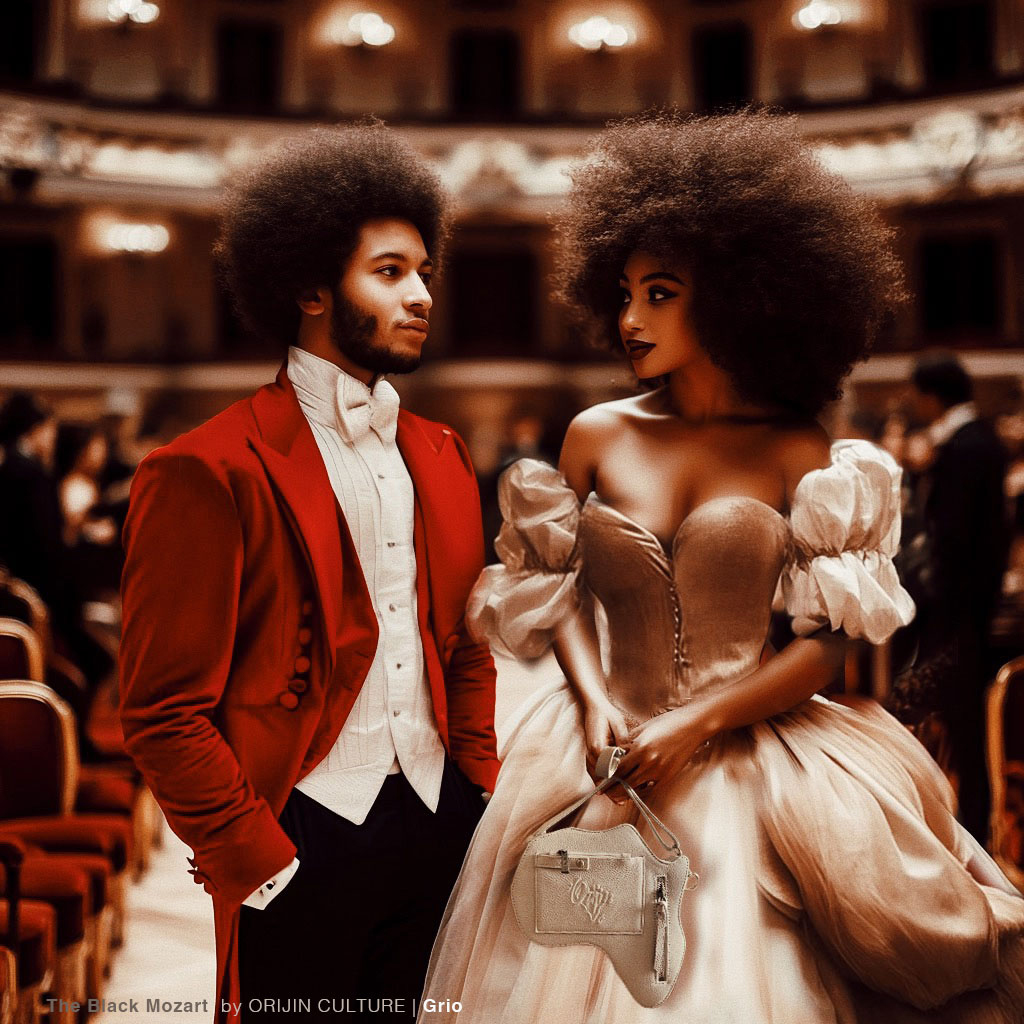Era el siglo XIX, una época en la que el mundo estaba inmerso en la música clásica, las bellas artes y la cultura. En una bulliciosa ciudad europea, susurros de un evento extraordinario extendido como un incendio forestal. El Mozart Negro, el brillante compositor y violinista, estaba listo para actuar. Este no fue cualquier actuación; Fue un evento que dibujó la élite, el de moda, y el atrevido. Y en medio de esta gran ocasión, En, una diseñadora de mujer negra, estaba decidido a dejar una marca. Después de todo, fue hermano actuando y tuvimos que salir bien para representar.
Mis amigos y yo habíamos pasado semanas preparándonos para esta noche. Éramos más que solo asistentes; éramos visionarios, trayendo la elegancia y riqueza de la moda afro al corazón de Europa. Nuestros vestidos fueron hechos a partir de las mejores sedas y adornados con patrones intrincados inspirados en nuestra herencia africana. Cada puntada fue un homenaje a nuestra cultura, Una celebración de nuestra identidad.
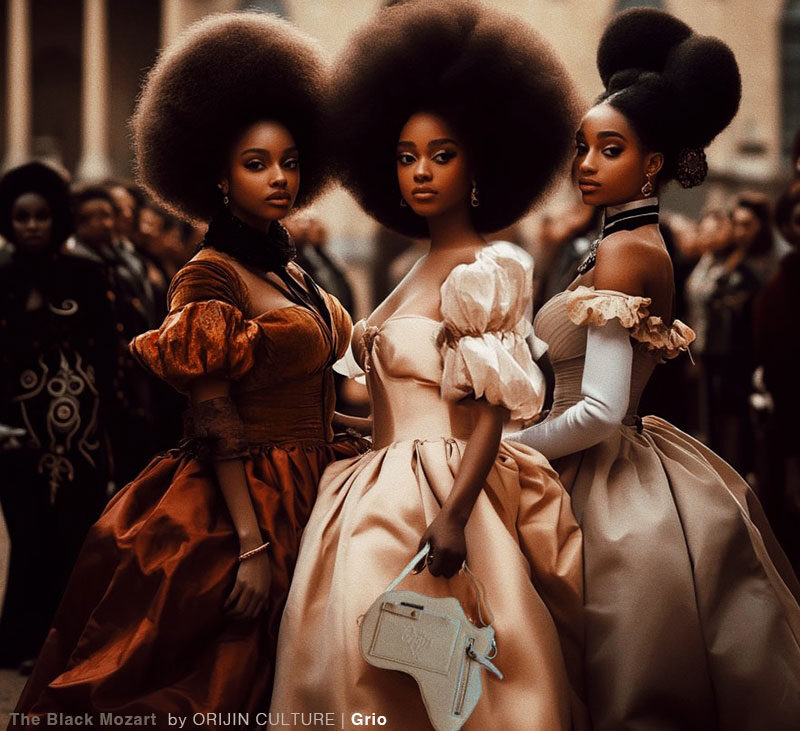
Cuando llegamos a la gran sala de conciertos, las cabezas giradas y los susurros llenaron el aire. Nuestra entrada fue nada menos que espectacular. Llevaba un vestido de marfil que brillaba bajo la luz de las velas. Mis amigos eran igualmente impresionantes, Vestido en colores y telas que hablaban de la realeza y la gracia. Mi único Bolso de cuero en forma de África Por supuesto, fue la charla de la noche con muchos cumplidos. Ohh sí! De hecho, agrega los toques finales perfectos a nuestros conjuntos.. Adentro, El ambiente era eléctrico. La sala de conciertos estaba adornada con candelabros opulentos., Y la audiencia zumbó con anticipación. Encontramos nuestros asientos, y a medida que las luces se atenuaron, Le Mozart Noir tomó la pasantía. Su presencia fue dominante, su talento innegable. La música que tocó fue una fusión de elegancia clásica y ritmo africano, un testimonio de su genio único.
Durante el intermedio, Nos mezclamos con la élite, Nuestra admiración y curiosidad de Afro Fashion Drawing. Uno por uno, se acercaron a nosotros, ansioso por aprender sobre nuestros diseños y las inspiraciones detrás de ellos. "Orgullo por mi rica herencia y cultura". Había respondido tanto que comenzó a sonar como un himno. Fue un momento de intercambio cultural, Una combinación de mundos que parecían mundos separados pero estaban conectados a través del lenguaje universal del arte y la moda.
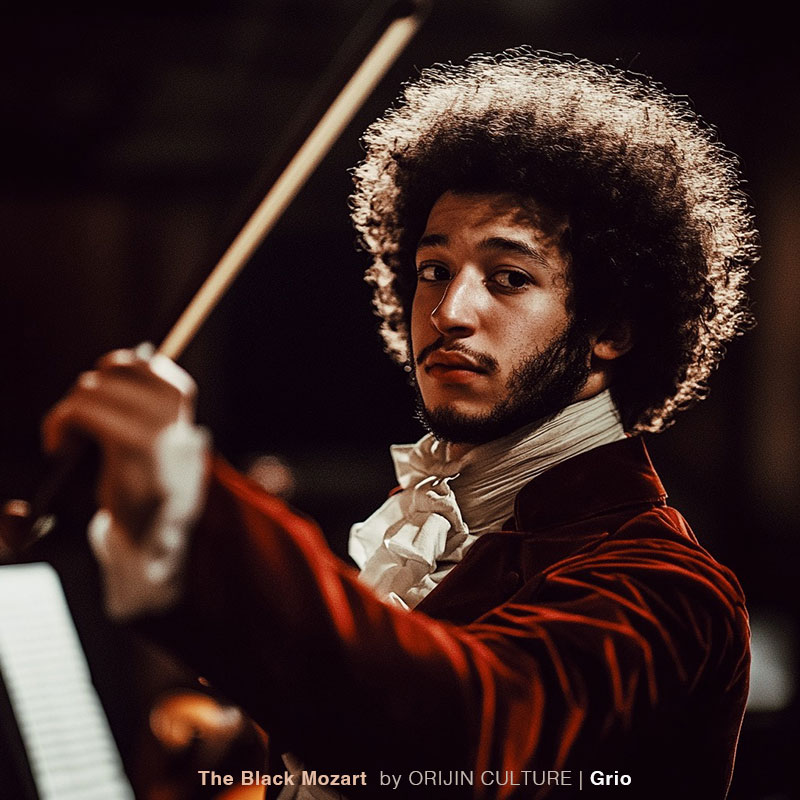 La noche dio un giro inesperado cuando un caballero distinguido se me acercó. Se presentó como un reconocido patrón de arte y expresó su admiración por mi moda. "Tus diseños son extraordinarios,"Dijo. “Traen un soplo de aire fresco y la historia no contada de mi origen y cultura africana.. Mi madre es senegalés ”sonreí, humilde por sus palabras. "Nunca lo supe y gracias por el cumplido. Mi moda es y siempre tendrá un reflejo de nuestra herencia, nuestro orgullo, y nuestro viaje ". Él asintió pensativamente. “Me encantaría mostrar tu trabajo en una próxima exposición. Tus diseños merecen ser vistos por el mundo ".
La noche dio un giro inesperado cuando un caballero distinguido se me acercó. Se presentó como un reconocido patrón de arte y expresó su admiración por mi moda. "Tus diseños son extraordinarios,"Dijo. “Traen un soplo de aire fresco y la historia no contada de mi origen y cultura africana.. Mi madre es senegalés ”sonreí, humilde por sus palabras. "Nunca lo supe y gracias por el cumplido. Mi moda es y siempre tendrá un reflejo de nuestra herencia, nuestro orgullo, y nuestro viaje ". Él asintió pensativamente. “Me encantaría mostrar tu trabajo en una próxima exposición. Tus diseños merecen ser vistos por el mundo ".
Mi corazón se disparó. Esta fue la oportunidad de toda una vida, una oportunidad de brillar la moda a la vanguardia de la escena de la moda europea. Intercambiamos información de contacto(No olvides que todo esto está en mi imaginación, Así que está bien que imagine desabrochar mi bolsa de África y sacar mi teléfono, lol). Después de intercambiar números, Sabía que esto era solo el comienzo de algo monumental.
Cuando el concierto llegó a su fin, La audiencia estalló en aplausos. Le Mozart Noir había demostrado una vez más su brillantez, y habíamos dejado nuestra marca. Nuestra moda no solo había robado la escena, sino que también había unido una brecha cultural, Mostrar la belleza y la elegancia del diseño africano. En esa noche mágica, En medio de la música y el glamour, habíamos reescrito la narrativa. No éramos solo espectadores; éramos creadores, influenciadores, y pioneros. Y cuando salimos de la sala de conciertos, Nuestros bolsos de cuero en forma de África se balancean con cada paso, Sabíamos que nuestro viaje acababa de comenzar el futuro..
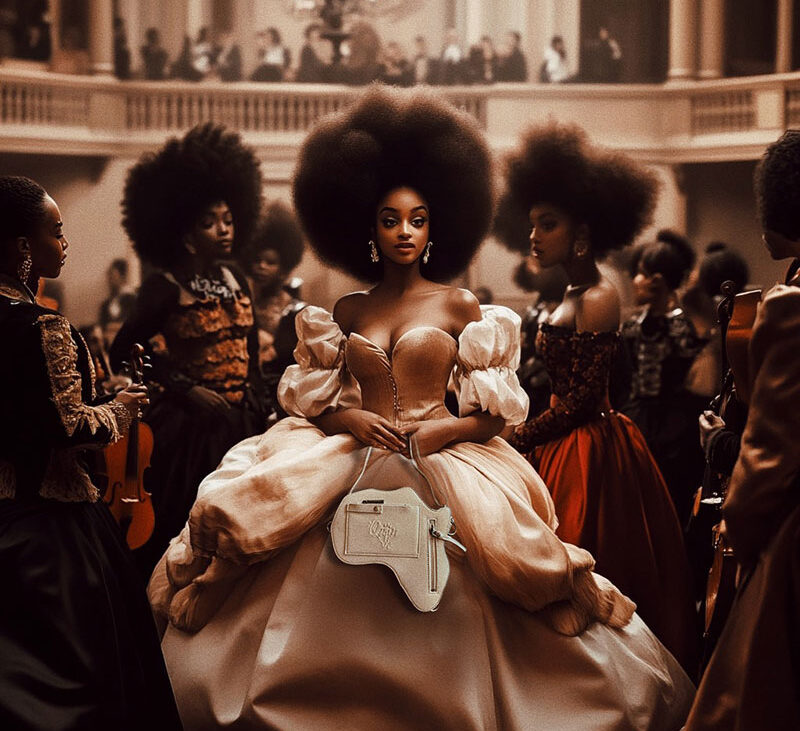

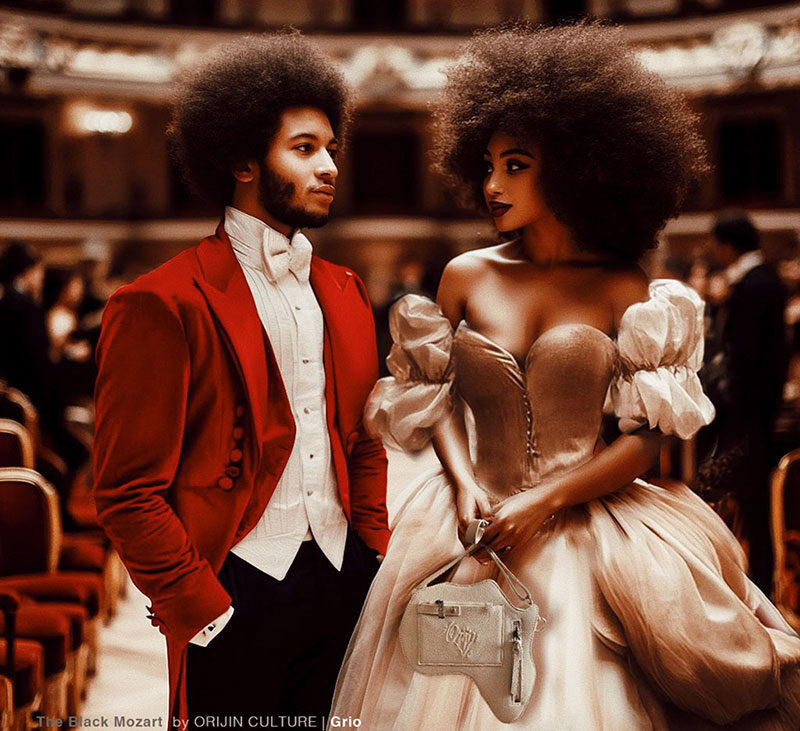
Mozart negro, el primer afro-francés a ... | Leer MásMenos
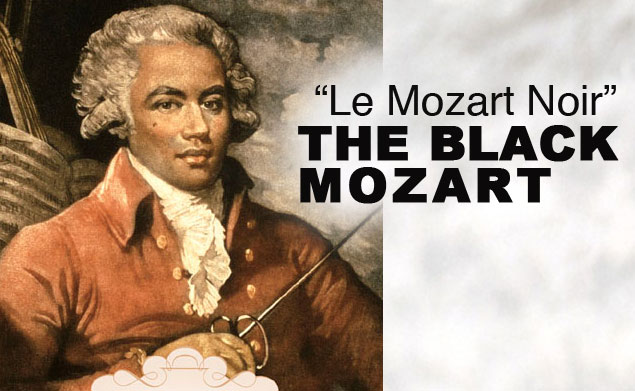
Las artes siempre han jugado un papel importante en la historia y la cultura de los descendientes de africanos. Mientras que muchas personas hoy en día a menudo limitan el alcance del arte dentro de la diáspora africana, el hip hop, rap, R & B, danza contemporánea y todas las otras formas emergentes de arte contemporáneo musicales, Descendientes de africanos han contribuido y han jugado un papel importante en todas las formas de arte y han hecho impresiones importante y significativa en los.
José Bo(usted)Logne, Caballero de San Jorge (Diciembre 25, 1745 - Junio 10, 1799) También conocido como "Le Mozart Noir" o "The Black Mozart" fue el primer hombre negro en dirigir las orquestas más importantes de Francia. Un compositor, director de orquesta y virtuoso del violín, Chevalier de Saint-George nació de una madre senegalesa esclavizada y una colonialista francesa en la isla de Guadalupe en Caribe francés y se mudó a Francia a la edad de 8. También conocido por sus habilidades atléticas como nadador y espadachín, También fue uno de los primeros compositores franceses de los cuartetos de cuerda, sinfonías concertantes, y cuartetos concertantes.
Regalo de Chevalier de Saint-George como violinista a menudo se reunió con elogios. Arion en CD 55445 (1999) Joel violinista Marie Fauquet declarado que "su talento aterciopelado en el violín a veces le daba preferencia a los más hábiles artistas de su época '. Su talento superior como director de Le Concert estuvo representada por el hecho de que se declare que “la mejor orquesta de sinfonías de París y quizá en Europa” por el almanaque musical en 1775.
A pesar de su talento y el éxito observado, Chevalier de Saint-George no era inmune del racismo. Cuando se propuso como director musical de la Ópera de 1776, muchos protestaron e hicieron una petición a la reina declaró que "su honor y su delicada conciencia nunca podría permitir a someterse a las órdenes de un mulato." A pesar de estas objeciones señaló, Perseveró y se convirtió en una de las estrellas más grandes del siglo XVIII en Francia.
Bob Marley aconsejó "No ganes el mundo y pierdas tu alma, la sabiduría es mejor que la plata o el oro…". Sólo a través de la adquisición de conocimientos de nuestra rica cultura e historia, seremos capaces de requieren la sabiduría de Bob Marley habló de. La historia de Chevalier de Saint-George ofrece no sólo como una parte importante de la historia del mundo africano, sino que también sirve como una inspiración para los aspirantes a artistas.
Está más allá de la moda para nosotros, Está tejiendo nuestras propias historias con orgullo y preservando nuestro patrimonio con estilo. Disfruta de tus compras a continuación.
Compartir la cultura orijin
Últimos mensajes de Nekita (ver todo)
- Antes de que Rihanna había Grace Jones - Diciembre 27, 2014
- Marimba: La expresión de la Libertad, Sin embargo, mi afroecuatorianos… - Diciembre 25, 2014
- ¿Quién hace presumir de ser la capital del Reggae del Mundo? - Diciembre 24, 2014


